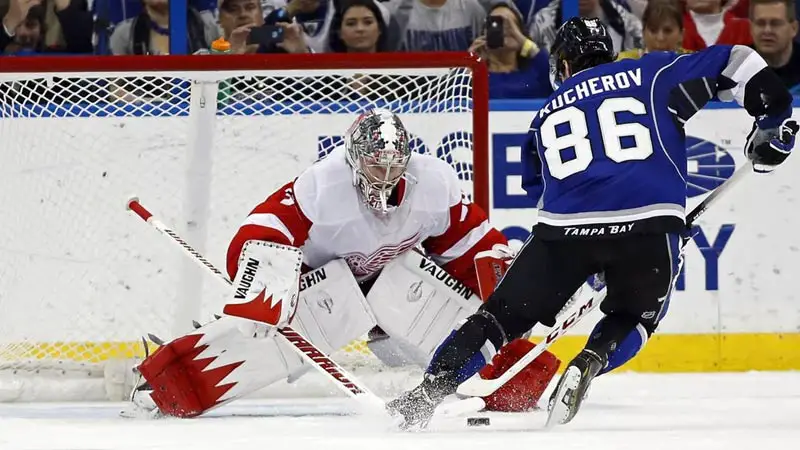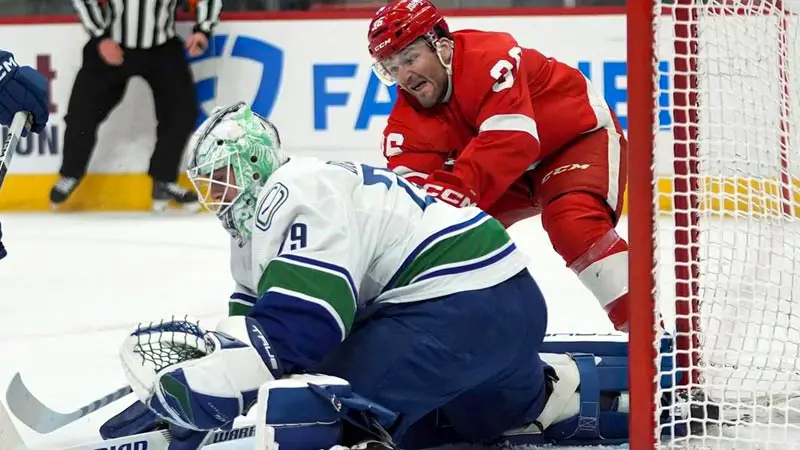Hockey is a sport that demands a unique blend of strength, stamina, and mental acuity. Players glide across the ice at high speeds, balancing on blades just 1/8 of an inch thick, all while being pursued by opponents wielding sticks.
Among the various positions on the ice—center, winger, defenseman, and goalie—the goalie stands out as the most challenging.
The role of a goalie requires not only physical prowess but also exceptional mental resilience. It’s a position where one must constantly anticipate the opponent’s moves, react swiftly, and maintain composure under pressure.
The goalie is often the linchpin of a team’s success, making the difference between victory and defeat.
This combination of physical demands and mental fortitude arguably makes the goalie the hardest position to play in hockey, if not in all professional sports.
Why is the Goalie Position the Hardest in Hockey?
Ice hockey is a sport renowned for its speed, skill, and physicality, and every position demands a unique set of abilities. However, one position stands out as exceptionally challenging: the goalie.
This blog post will explore the various factors that contribute to the goalie being considered the most demanding position in hockey.
The Lengthy Road to Goaltending Mastery
Unlike other positions, goalies typically take significantly longer to develop their skills to a professional level.
While forwards and defensemen may enter the NHL a few years after being drafted, goalies often require six to eight years before they are ready for the highest level of competition.
The reason behind this extended development period lies in the complex nature of goaltending, which involves a unique blend of physical and mental attributes.
The Mind of a Goalie: A Fusion of Athleticism and Intelligence
Goalies must possess lightning-fast reflexes and exceptional agility, but these physical attributes alone are insufficient.
To excel, they need a deep understanding of the game, the ability to anticipate plays, and the mental fortitude to withstand immense pressure.
A goalie’s success depends heavily on their ability to read the play, predict the puck’s trajectory, and position themselves strategically to make the save.
This anticipatory skill takes years of practice and experience to hone, which explains why goaltending prospects often require more time to mature than their counterparts in other positions.
A Physically Grueling Position
The goalie’s equipment, while essential for protection, adds significant weight and restricts movement.
Moreover, they are subjected to a constant barrage of high-speed shots, making the position incredibly demanding physically.
While forwards and defensemen can rotate shifts to conserve energy, the goalie remains on the ice for the entire game, except for intermissions.
This sustained exertion takes a toll on even the most seasoned goalies, which is why teams have become more strategic in managing their workload, limiting their playing time to around 60-65 games per season to ensure their health and readiness for the playoffs.
The Weight of Responsibility: No Room for Off Nights
The goalie carries a unique burden of responsibility. A subpar performance from a forward or defenseman can be compensated for by other players.
However, a goalie having an off night almost inevitably leads to a loss. The margin for error is slim, and even a single soft goal can be the difference between victory and defeat.
This constant pressure to perform at a high level adds another layer of complexity to the already challenging role of the goalie.
Challenges Of Each Position

Each hockey position comes with its set of challenges, requiring players to balance physical skills and mental acuity to excel.
Unique Challenges For Forwards
Forwards constantly engage with opposing defenses. Their main task involves creating scoring opportunities while outmaneuvering defenders.
Skating speed and agility become crucial as they need to execute quick transitions from defense to offense. Forwards also rely on strategic vision to read plays and anticipate the movements of both teammates and opponents.
They often face the pressing challenge of maintaining pace and stamina throughout the game, even when under pressure from the opposing team.
Difficulties Faced By Defensemen
Defensemen uphold the defensive line with a mix of physicality and intelligence. They play crucial roles in intercepting passes and blocking shots, positioning themselves adeptly to thwart offensive plays.
Quick reaction time allows them to counteract the opposing offense effectively. Besides physical toughness, defensemen require smart decision-making to predict opponents’ actions and respond accordingly.
Effective coordination with their defensive partner adds another layer of complexity, especially in fast-paced games where communication is key.
Physical And Mental Demands On Goaltenders
Goaltenders endure immense pressure as the last line of defense. Outstanding hand-eye coordination becomes essential to block rapid shots on goal.
They must exhibit extreme flexibility to cover the entire goal line, sometimes needing to protect both posts simultaneously.
Mental toughness stands paramount; successful goaltenders possess short memories, enabling them to swiftly recover from mistakes and focus on upcoming plays.
Their role demands quick reflexes and resilience, making them arguably the hardest position holders in hockey.
Factors Influencing Player Success
The success of a hockey player depends on several key elements that are vital in such a demanding sport. Each position requires a unique blend of skills that can determine a player’s effectiveness and overall contribution to the team.
Physical Attributes And Skills
Superior physical abilities heavily affect performance on the ice. Goaltenders need lightning-fast reflexes and exceptional flexibility for shot-stopping.
Forwards excel with agility and speed, which are crucial for creating scoring opportunities against defenders.
Defensemen benefit from strength and endurance to withstand physical encounters, intercept passes, and clear the puck efficiently.
Tactical Understanding And Awareness
Understanding the game’s tactics allows players to make smart decisions during play. Goalies benefit from reading opponents’ formations and anticipating plays, while forwards rely on strategic vision to identify and exploit defensive gaps.
Defensemen use their awareness to maintain the defensive line and prevent goal-scoring opportunities by positioning wisely and predicting opponents’ moves.
Psychological Resilience
Mental toughness keeps players composed under pressure, which is critical in intense situations. Goalies face isolation and high-stakes scenarios, needing unwavering focus to block pucks successfully.
Forwards and defensemen handle rapid shifts in play dynamics, requiring quick adaptability and on-the-spot problem-solving to handle game-time pressure effectively and resiliently.
Conclusion
Hockey’s demanding nature requires players to master a blend of physical and mental skills unique to their positions.
While each role on the ice presents its own set of challenges, the goalie stands out as the most demanding, requiring unparalleled mental resilience and physical agility.
The ability to anticipate, react, and maintain composure is vital for a goalie’s success, making it a pivotal position in the sport.
Despite the distinct challenges faced by forwards and defensemen, who rely on speed, strategy, and strength, the goalie remains the linchpin of a team’s defensive strategy.
This analysis underscores the complexity and intensity of hockey, highlighting the remarkable skills needed to excel in this fast-paced sport.





James Felix